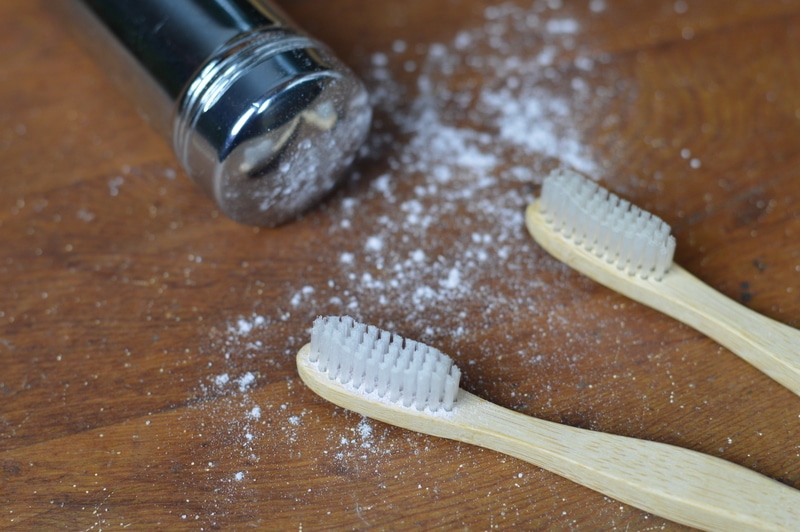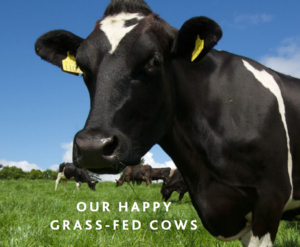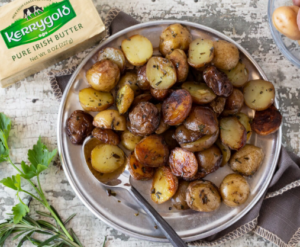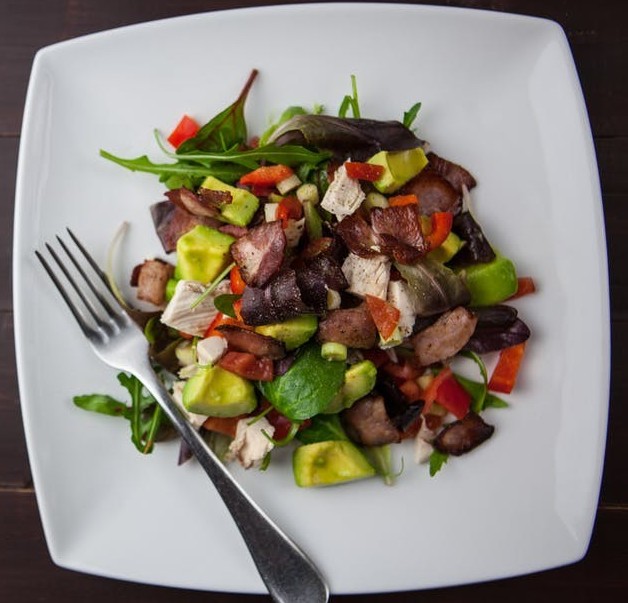Your teeth are one of the best indicators of your health. Today, I wanted to write about remineralizing your teeth naturally. It is something that I have done in the past, but lately, I noticed some sensitivity coming back to my teeth. They hadn’t been sensitive in the years that I had discovered this method, so I checked my diet. Argh! I had fallen into the habit of eating junk foods after Memorial day! While I love my friends and family, I do tend to overindulge when it comes to sweets. So, I promptly cut the junk food out of my diet and decided to research and write about curing teeth naturally to reinforce my commitment to my dental health.
Diet is A Bigger Factor than Brushing[easyazon_image align=”right” cart=”n” height=”500″ identifier=”1434810607″ locale=”US” src=”https://images-na.ssl-images-amazon.com/images/I/41LXldMCjrL.jpg” tag=”mcurle08-20″ width=”333″]
Many people emphasize going to the doctor, getting the expensive electric toothbrush. Dentists may also sell you on fluoridated tooth paste. However, if you can’t seem to stop getting cavities, your diet is likely the culprit and not your brushing habits.
We’ve been told for years that we must brush and floss our teeth to prevent cavities. The idea was that the acidity in the foods that we ate was wearing away the enamel of our teeth. But, cavities are really a nutritional problem first and an oral hygiene problem second.
Flossing and brushing while you continue to consume a cavity-promoting diet is very counter-productive. You aren’t stopping the source of the problem at all.
Remineralize Your Teeth
For many years, we’ve been told that teeth and enamel are a hard structure that once they decay, you can’t get them back. However, the body constantly seeks to heal itself. Bone fractures have the ability to heal, so why not teeth? You may want to think of teeth as a sponge instead of a hard structure. Things can go in and out. A tooth can gain and lose minerals. The minerals will harden the teeth when there are enough and weaken them when there aren’t enough minerals.
Teeth are constantly mineralizing and demineralizing. If your teeth are remineralizing more than they are demineralizing, they will fight off decay and stay healthy. When teeth demineralize faster, you will start to see tooth decay. Certain foods will promote demerinalization and others will promote remineralization.
Brushing and flossing don’t actively help to promote tooth mineralization much. Oral hygiene helps to remove plaque and tartar, which prevents it from building up. However, it doesn’t strengthen the teeth or eliminate decay. This is one reason diet is more important to dental health than brushing and flossing.
Weston A. Price – In Search of Optimal Dental Health
One of the highly regarded alternative dentists, Dr. Weston A. Price traveled the world in search of optimal health. Dr. Weston A. Price noticed that indigenous people who didn’t eat a modern diet had excellent health. He spent a decade carrying out one of the most compelling cross-cultural research projects around the world. Dr. Price also conducted research in his laboratory where he was able to pinpoint particular nutrients which were responsible for the robust health. He identified a fat soluble vitamin which he named activator X. Activator X is now known as vitamin K2

Getting More Vitamin K2
Vitamin K1 has been known and lauded for its importance in maintaining proper blood clotting and coagulation patterns. However, vitamin K2 remained elusive for many years. It was largely forgotten about. After a study published in 1997, researchers began to understand vitamin K2 is required for two essential physiological processes: the delivery of calcium to the bones for appropriate deposition and the removal of excess minerals from soft tissues to prevent the calcification of vulnerable areas. We are still discovering the full role of vitamin K2, however new studies reveal most of the population in modern industrialized cultures are significantly deficient in this vital nutrient.
As the science community was discovering vitamin K2 through scientific studies, Dr. Weston A. Price was writing about a fat soluble nutrient that he dubbed Activator X. He noted that this substance, which was mostly found in butterfat and the organs of grassfed animals, was the key to proper bone development, dental strength, immunity and sound neurological function.
Vitamin K2 is found in animal products, such as eggs, meat, dairy and fats. With the Standard American diet being dense with candy, processed foods and egg substitutes, it isn’t shocking that we have rampant K2 deficiency. The quality of our intake has decreased substantially. Industrialized agriculture has decreased the mineral content in our food supply. Our food has sadly become almost void of the essential nutrients. Vitamin K2 is among one of the elements that has almost disappeared from our diets. This occurred mostly in the 1940s when farmers realized that cows could be inexpensively fed a diet of grains that was fortified with synthetic vitamin A and D, and they could survive without going outside and being in the sun. As all the animals began to be raised in massive commercial buildings, the production skyrocketed. However, the vitamin K2 is synthesized from the chlorophyll ingested by cows, pigs and chickens when they are grazing in green pastures. They must be in the sunshine to produce it.
Since farming techniques have left our animal products with little vitamin K2, we need to make a conscious effort to get it into our diet. You can do this by consuming meat, eggs and dairy which are from grass-fed animals as well as supplements with high vitamin butter oil.
- Grassfed Meat, Eggs and Dairy – Marketing is very clever and can lead you to believe that your animal products are healthier than they are. While many companies are labeling their products “cage-free”, “organic,” and free range, it doesn’t actually mean that these animals are outside in the pasture ever. The best labels to look for are “grass-fed” and “pastured.” If you truly want to ensure that you are getting the best quality meats, go to a local farm and ask questions about the treatment of the livestock they raise. The type of vitamin K2 that is found in grass-fed animal products is MK-4. It is extremely expensive to replicate and artificial MK-4 is metabolized very quickly in the body. It is best to get it through whole foods. Kerrygold Butter is a great tasting butter that is grassfed and available in most supermarkets.
- High Vitamin Butter Oil – This is one of the easiest ways to ensure that you’re getting vitamin K2 in your diet. This supplement is a valued superfood extracted by centrifusion from the rich, creamy raw milk of grass-fed cows. The nutrient levels of high vitamin butter oil are believed to be many times more concentrated than those in butter. Try X-Factor Gold High Vitamin Butter Oil or a High Vitamin Butter Oil/Fermented Cod Liver Oil Blend.[easyazon_image align=”right” cart=”n” height=”479″ identifier=”B074PLFVLG” locale=”US” src=”https://images-na.ssl-images-amazon.com/images/I/41bjImBdWFL.jpg” tag=”mcurle08-20″ width=”300″]
Use a Tooth Remineralizing Powder or Toothpaste
I discovered this recipe through JoybileeFarm. An alternative to making your own remineralizing powder is to buy a toothpaste that is all natural. I recommend Earthpaste.
Ingredients:
- 3 tbsp. Calcium carbonate
- 2 tbsp. bentonite clay
- 1/2 cup baking soda
- 1/4 cup Himalayan salt, crushed your spice grinder until a fine powder
- 1 tsp. Peppermint essential oil
- 10 drops myrrh essential oil
- 10 drops clove essential oil
- Store this in an 8 ounce Mason jar.
Directions:
Every ingredient in this powder is essential. This tooth powder contains no fillers. The ingredients may initially seem expensive, but the tooth powder will last for many months. It will also save you money at the dentist by preventing cavities.
Mix baking soda, calcium and Himalayan salt in a glass bowl. Whisk thoroughly. Add peppermint essential oil to your liking, myrrh essential oil and clove essential oil. You can store this in a Mason jar. Cap it tightly.
How to use this remineralizing tooth powder to cure tooth decay:
After you have packaged this into a Mason jar, or a similar storage container, you can package a smaller amount into a spice bottle that has a shaker top to enable you to sprinkle the tooth powder on a toothbrush. You actually only need a very small amount of the tooth powder.

Once you have shaken a small amount onto your toothbrush, moisten the toothbrush with a splash of water from the tap. If possible, use plain, unfluoridated water. If you have fluoride in your water, you can use filtered water to brush your teeth. Fluoride will bind to your teeth and prevent the remineralization with calcium. It is also very harmful to the thyroid as it fills the iodine receptors and inhibits iodine uptake.
With your moistened toothbrush, brush your teeth as normal. If you are focusing on curing tooth decay, hold the goop in your mouth for sixty seconds before you spit it out. This enables the tooth enamel to come in contact with the remineralizing calcium and clay. Spit it out. Rinse your mouth.
Brush your teeth after each meal and floss at least once per day to remove any food particles between teeth.
Conclusion
You certainly can remineralize your teeth. However, don’t expect perfect dental health to last forever if you are like me and indulging in gummy bears, chocolates, candy bars and brownies. However, now that you are armed with the knowledge that your teeth can remineralize with a change in diet, you no longer have to fear the dentist. Just make sure that you eliminate foods that demineralize your teeth from your diet for a while and incorporate the things that remineralize your teeth into your diet. This was not the first time that I slipped up on my diet, so I’m confident that I’ll be able to remineralize these teeth in a matter of months.
If you’d like to read up more on how to Cure Teeth Naturally, you can read Ramiel Nagel’s book, Cure Tooth Decay.




 People who have been consuming a high carbohydrate diet sometimes experience what is known as a “carb crash” a few days into a very low-carb diet. The theory behind this is that your body’s glucose reserves (stored as glycogen) are used up, but your body isn’t used to running on fat and protein, or being keto-adapted, yet.
People who have been consuming a high carbohydrate diet sometimes experience what is known as a “carb crash” a few days into a very low-carb diet. The theory behind this is that your body’s glucose reserves (stored as glycogen) are used up, but your body isn’t used to running on fat and protein, or being keto-adapted, yet.